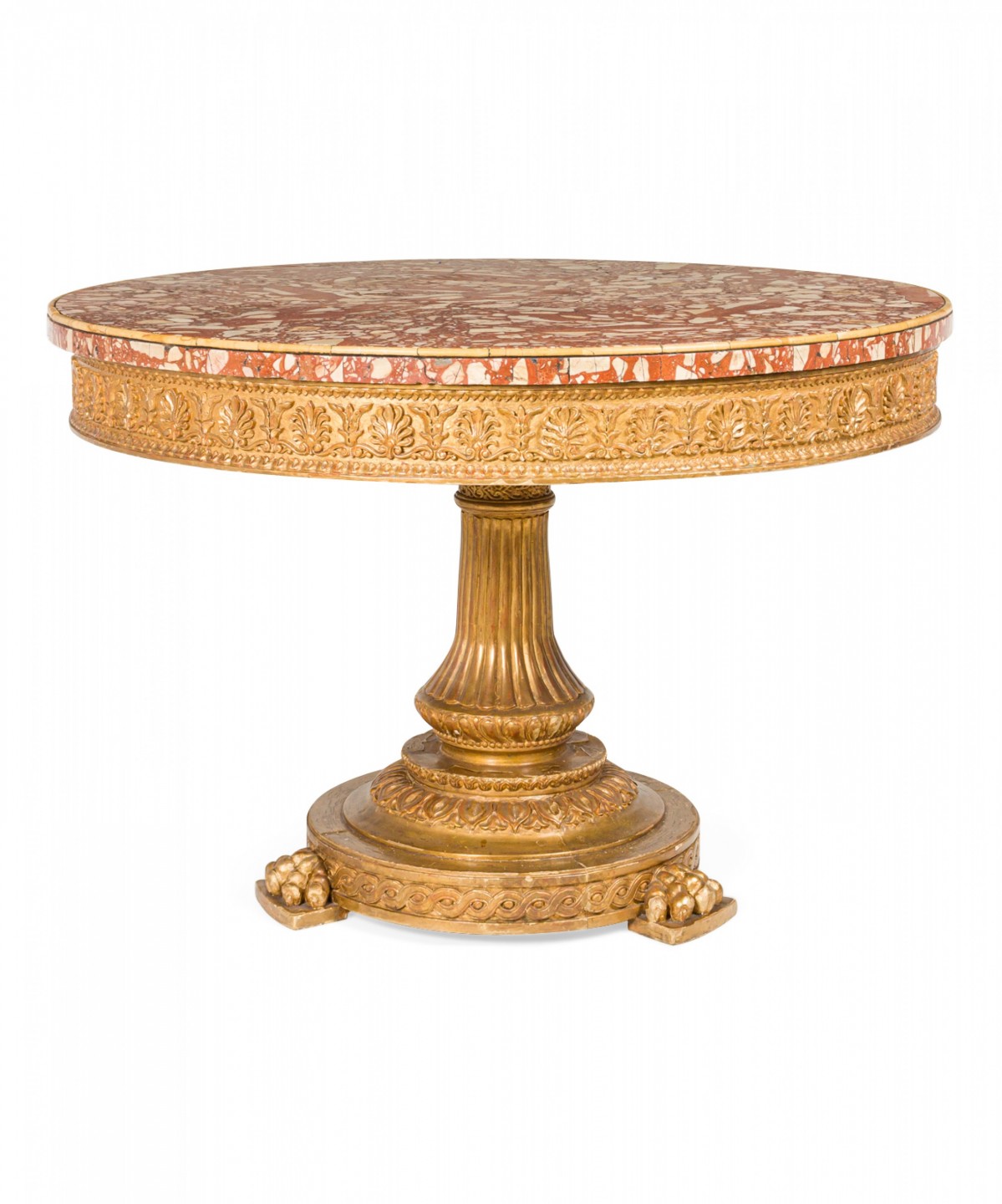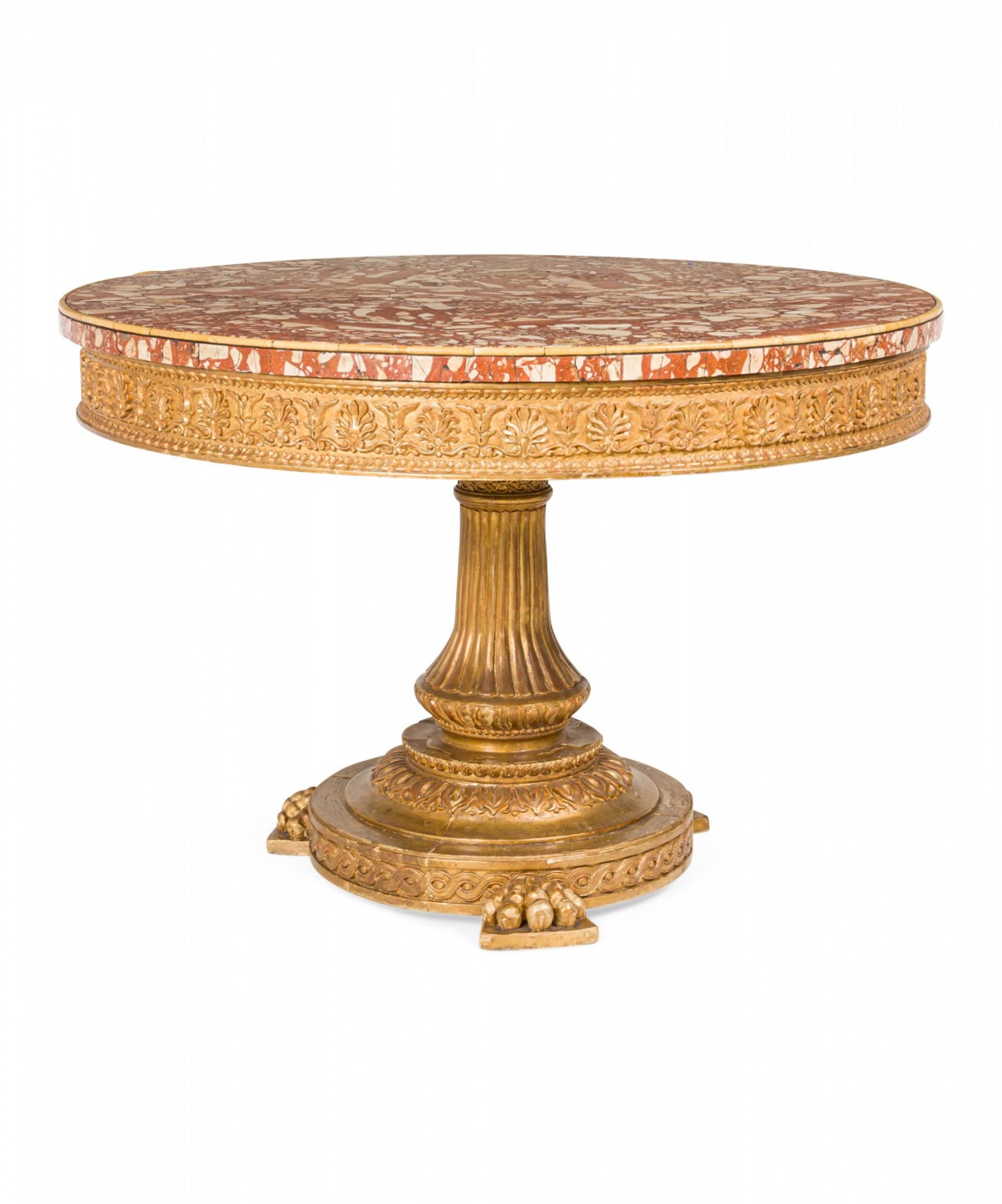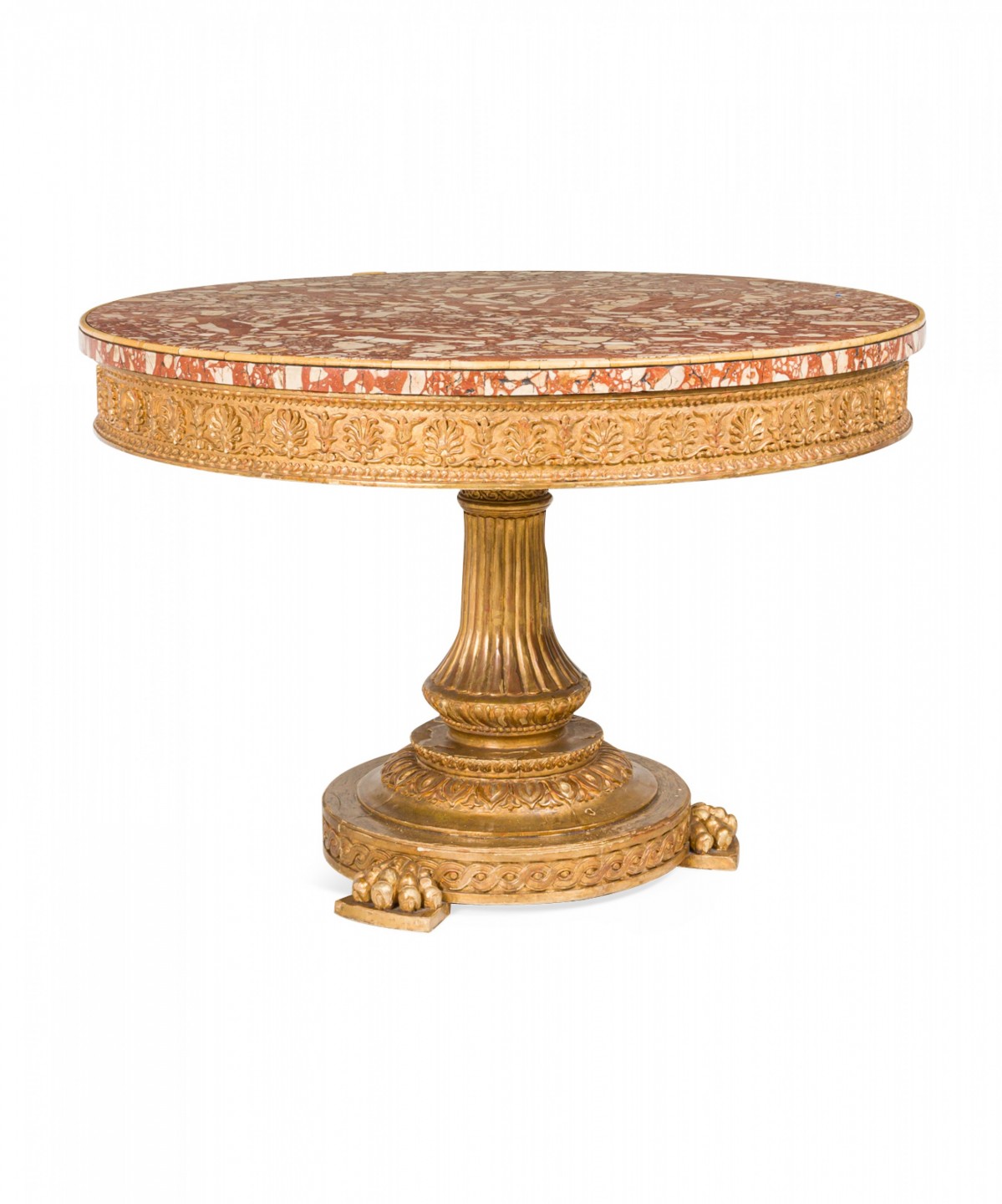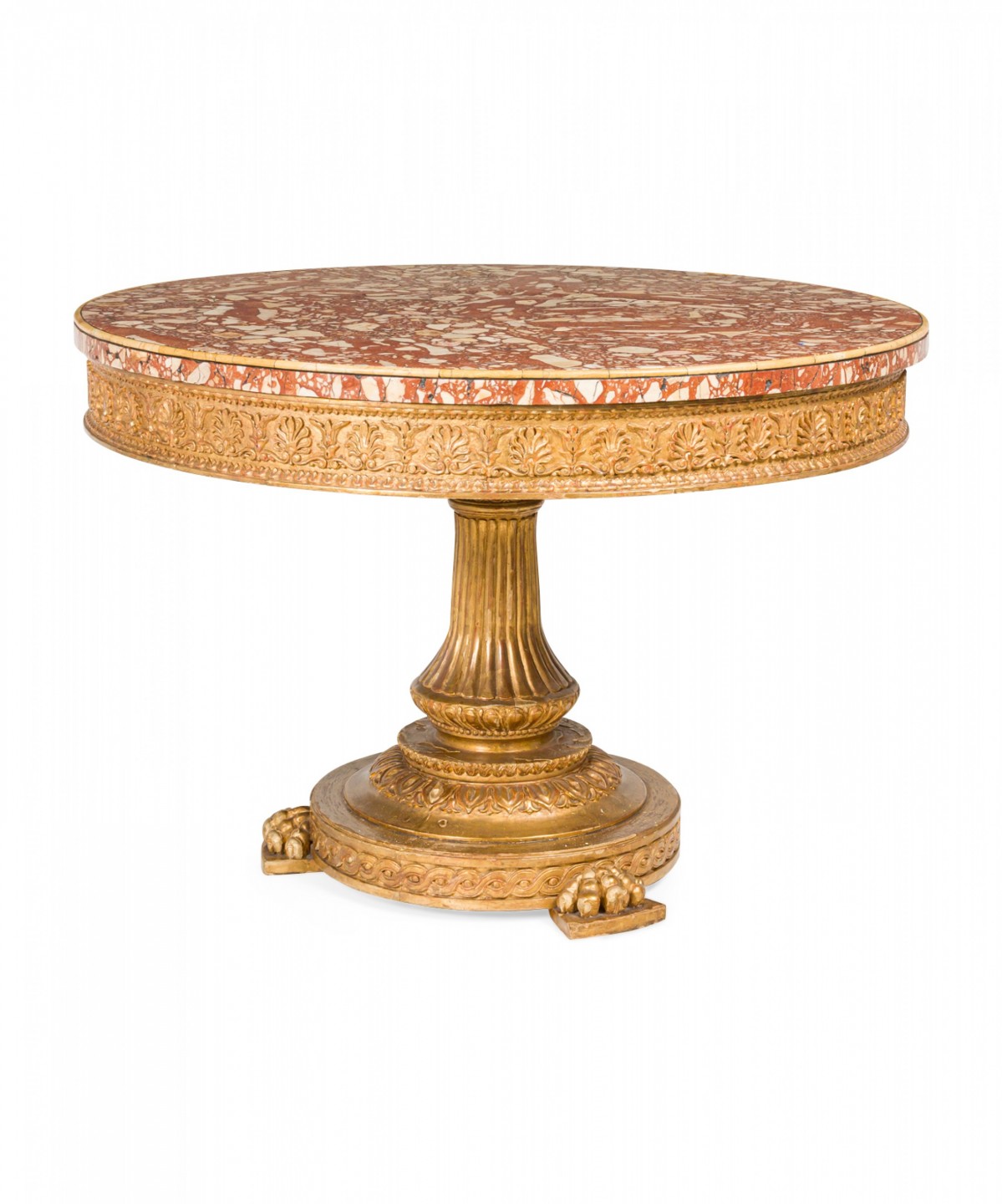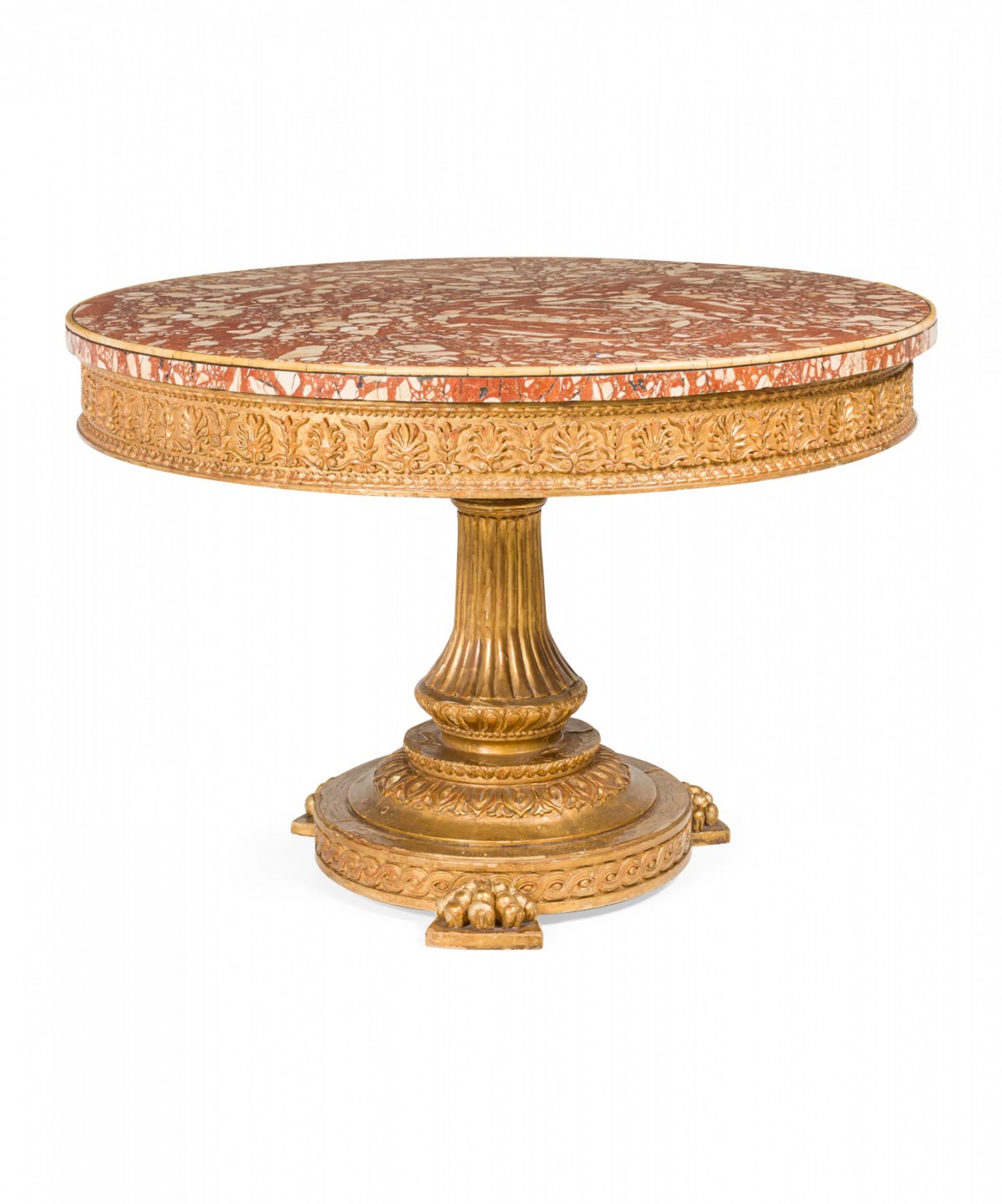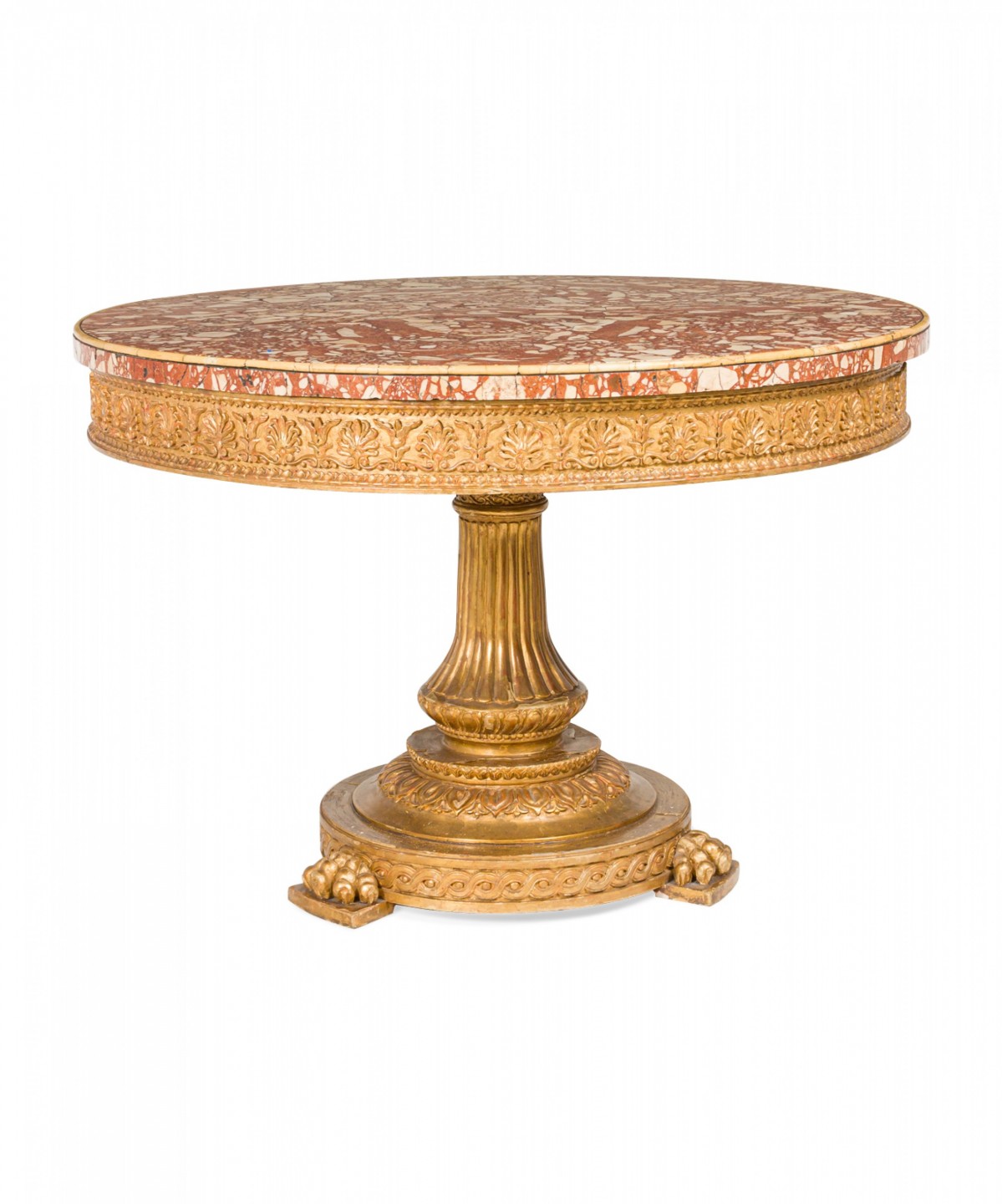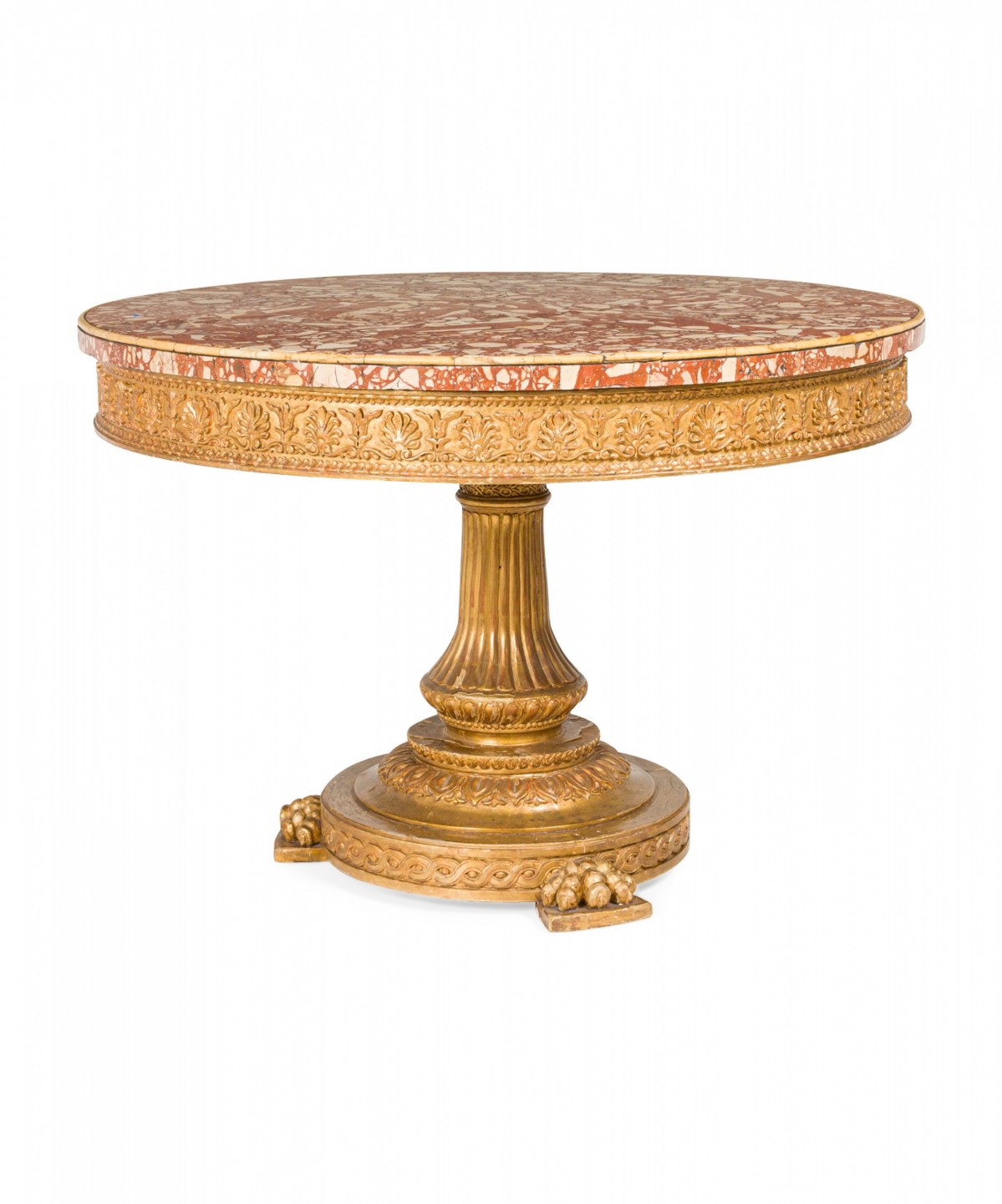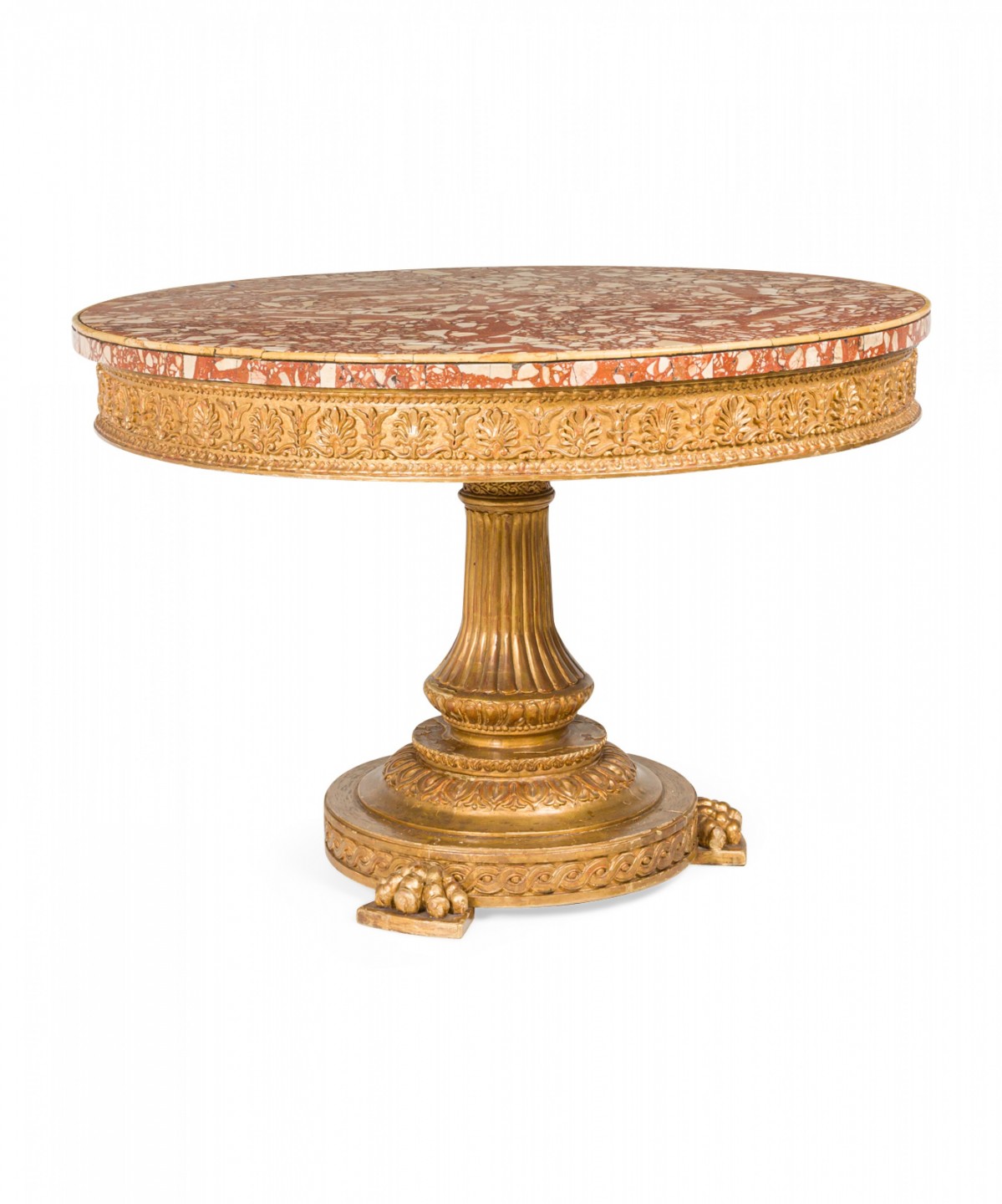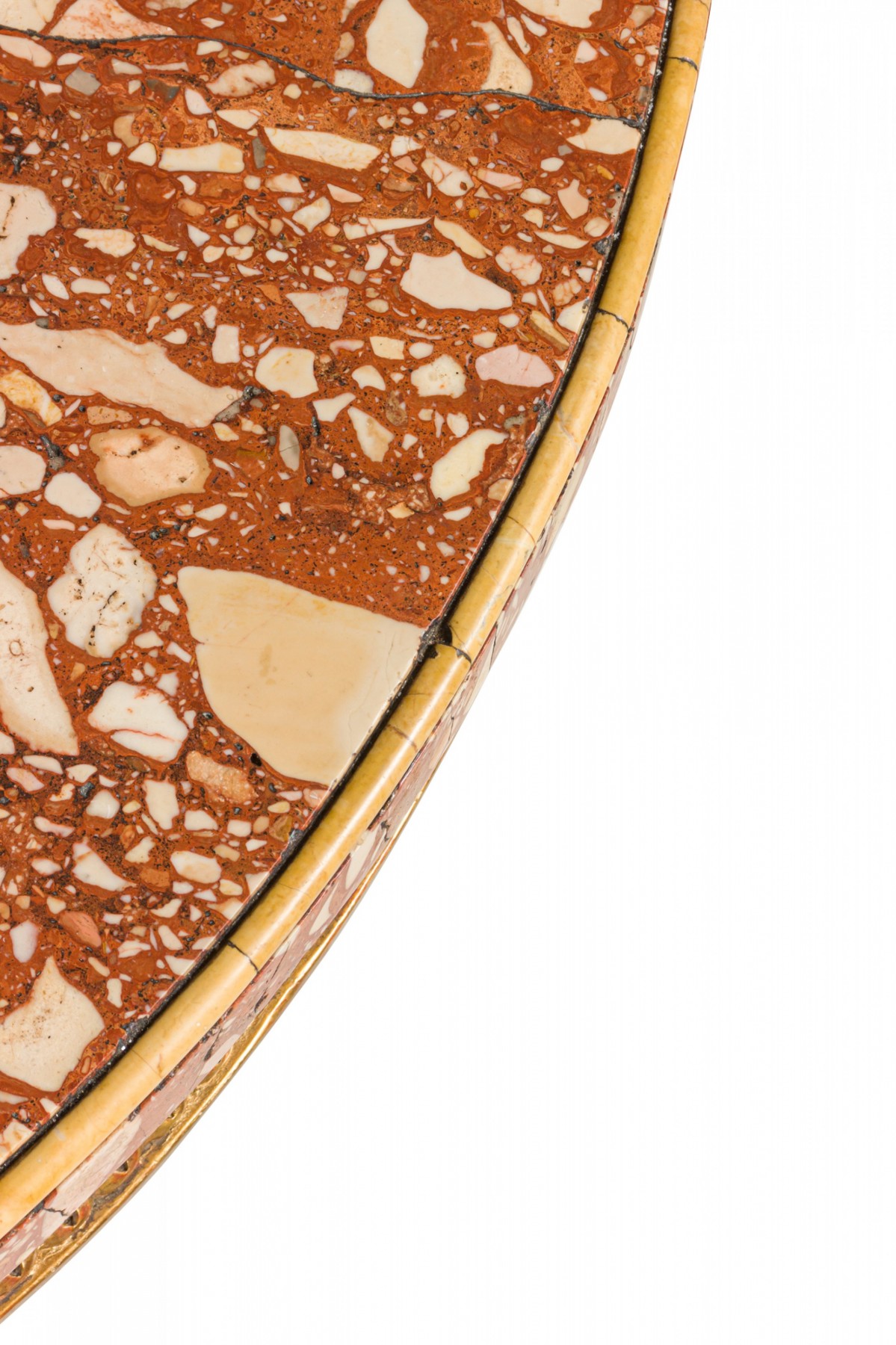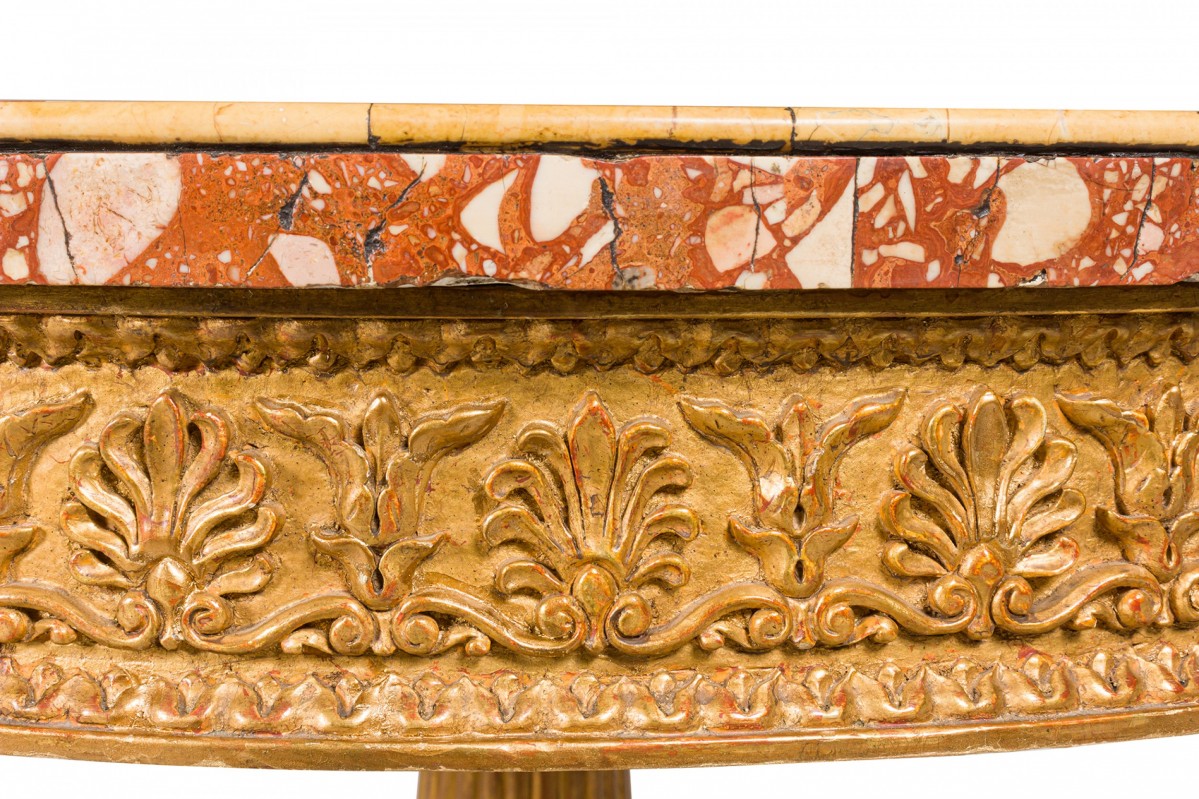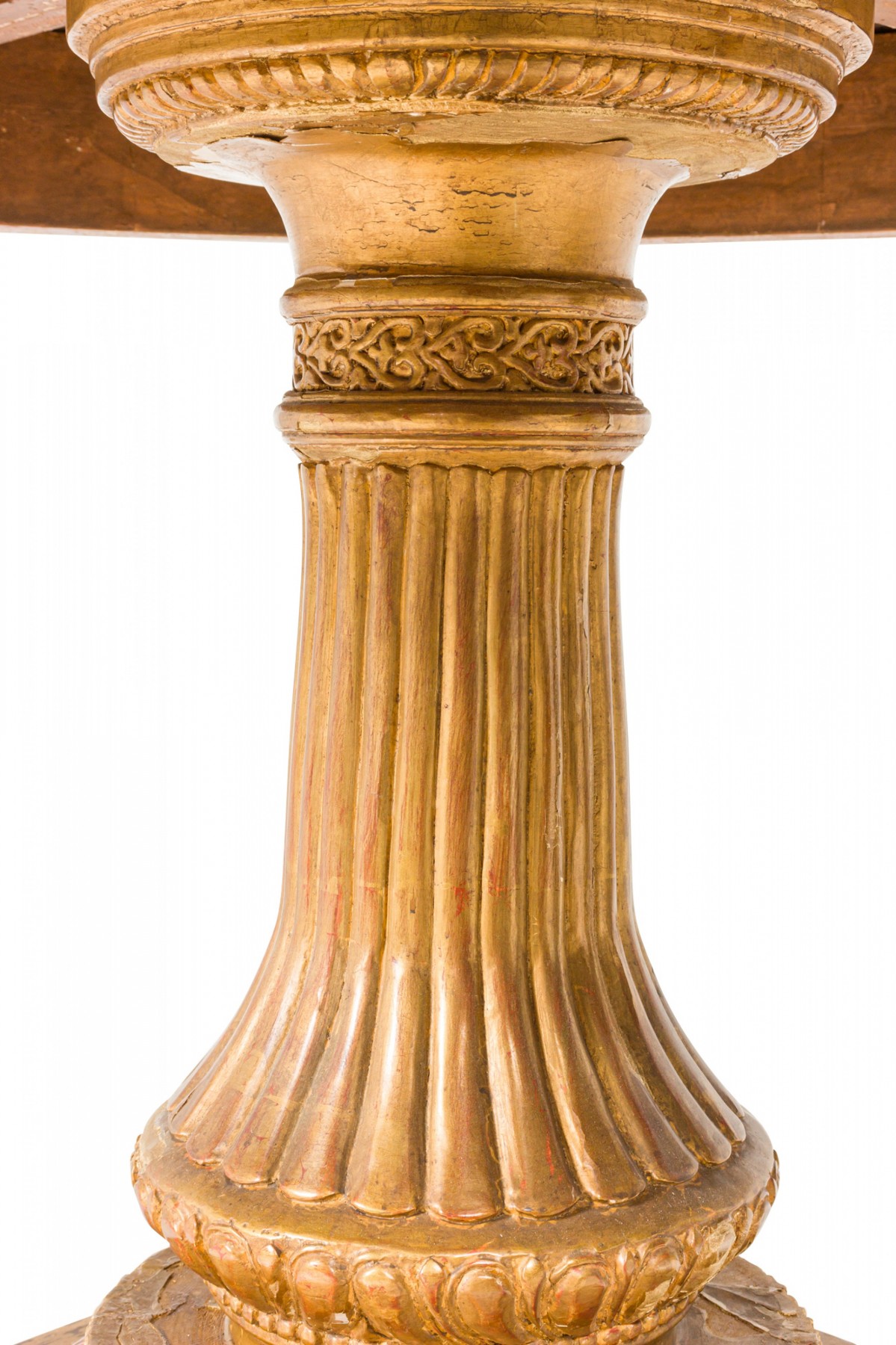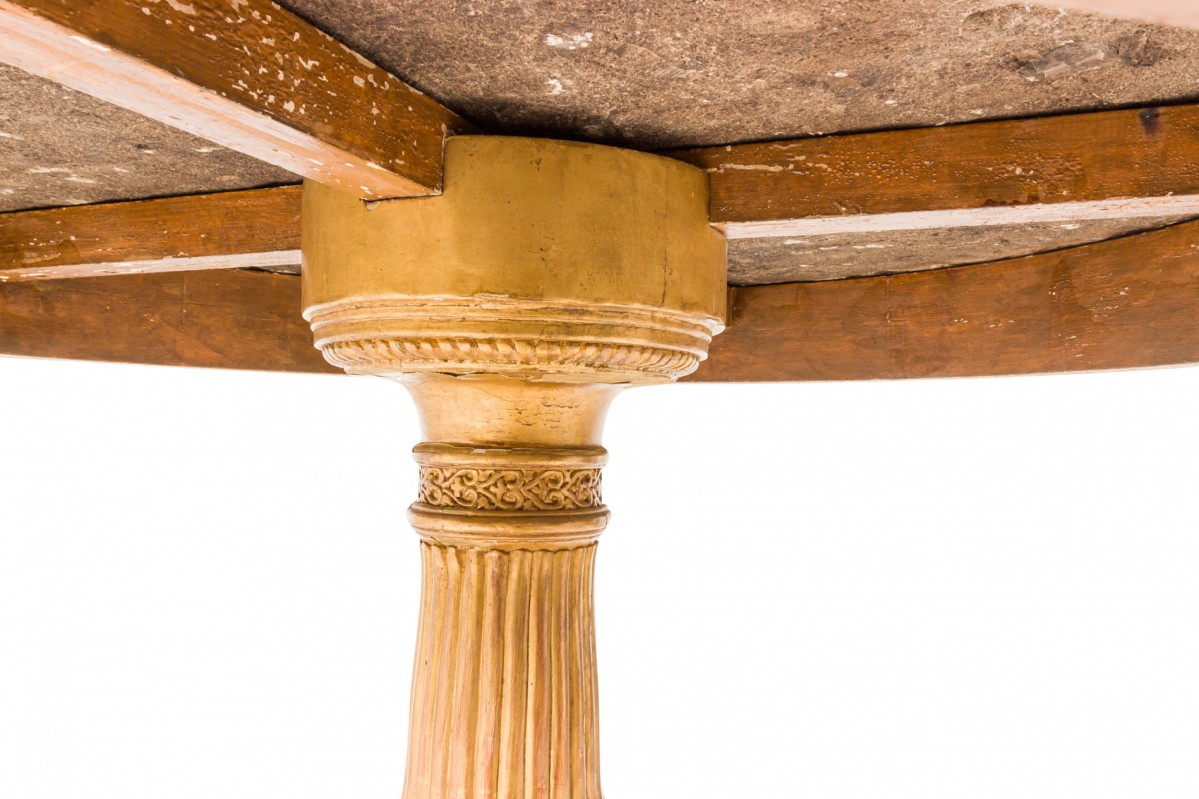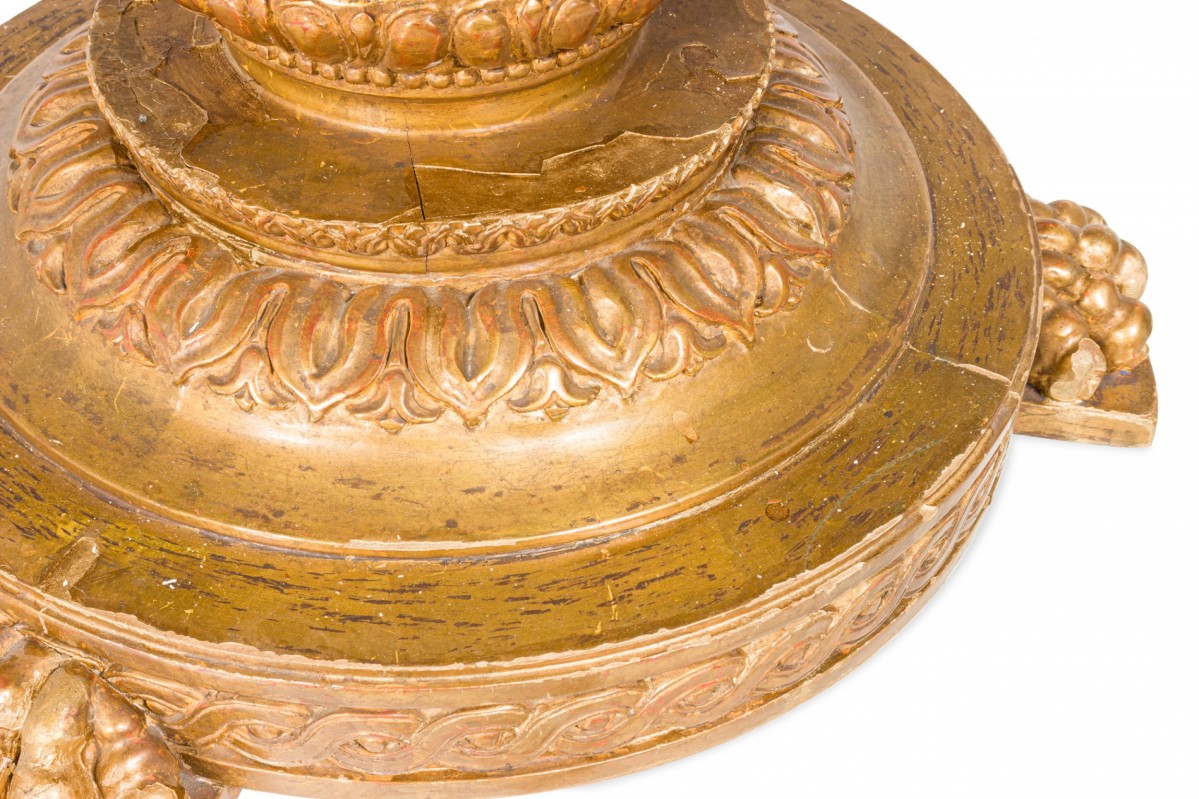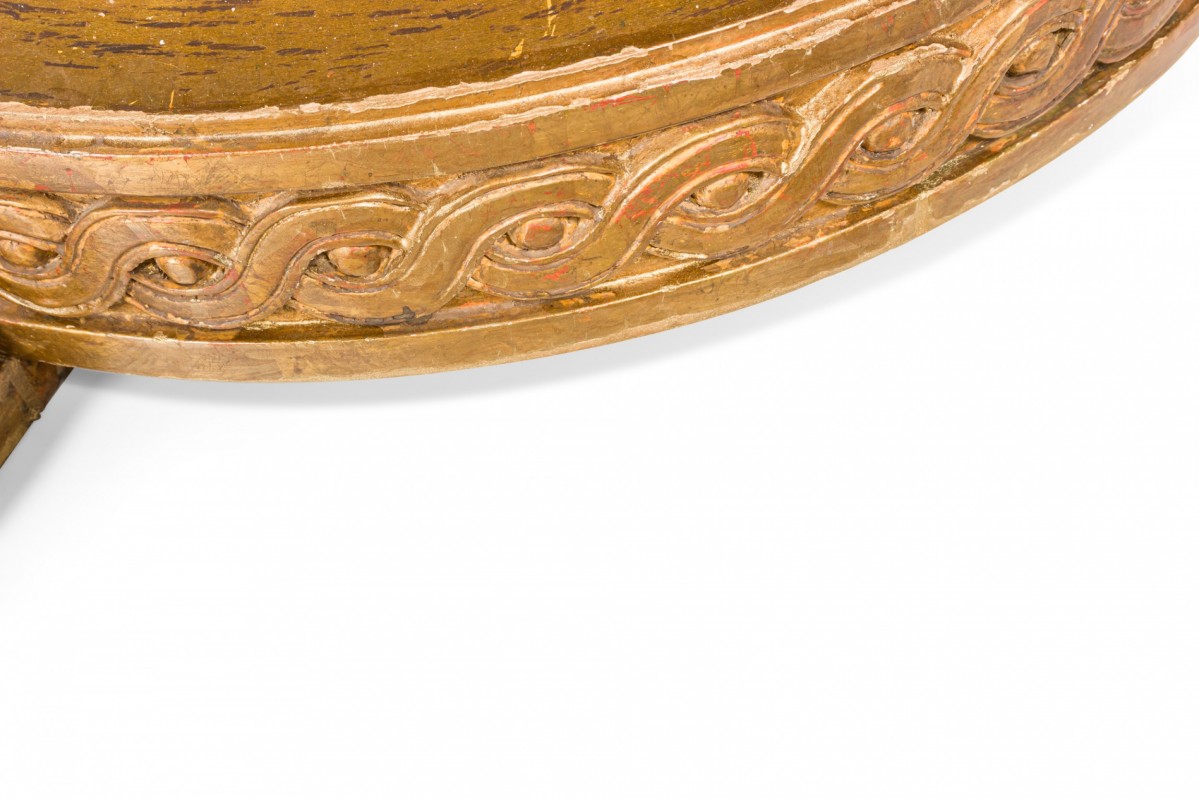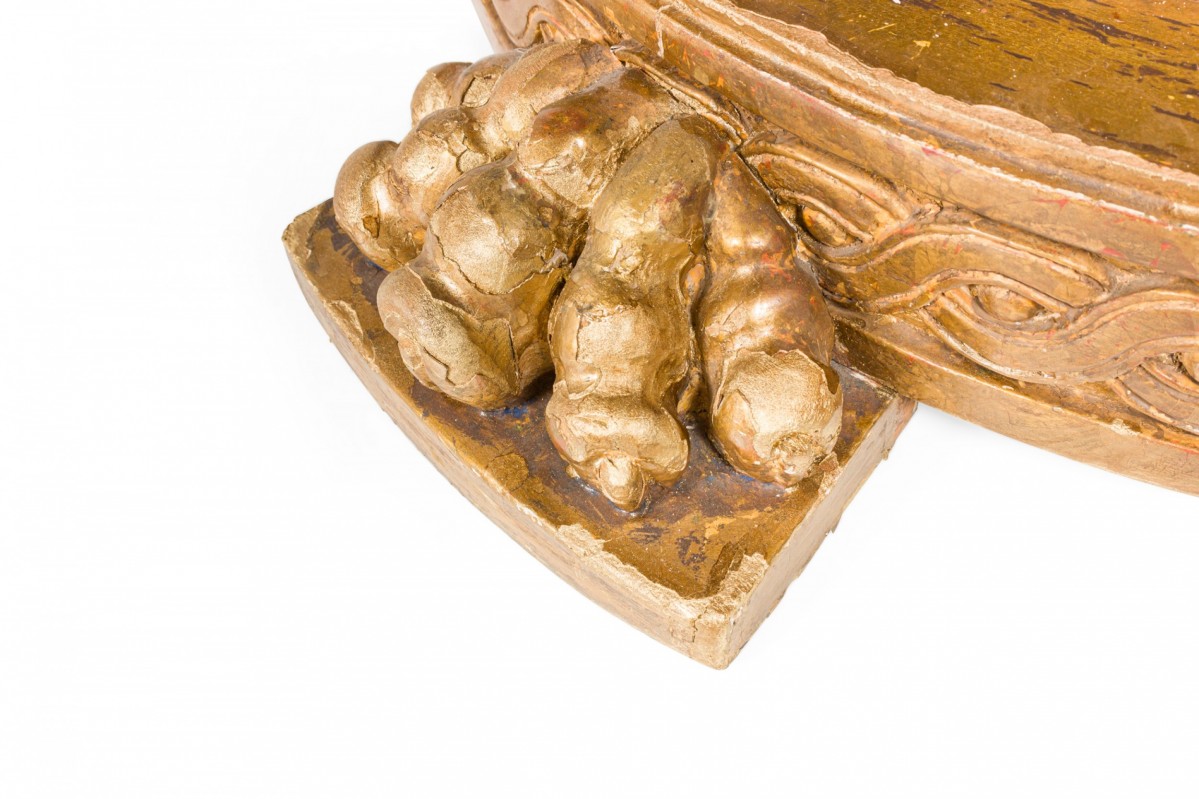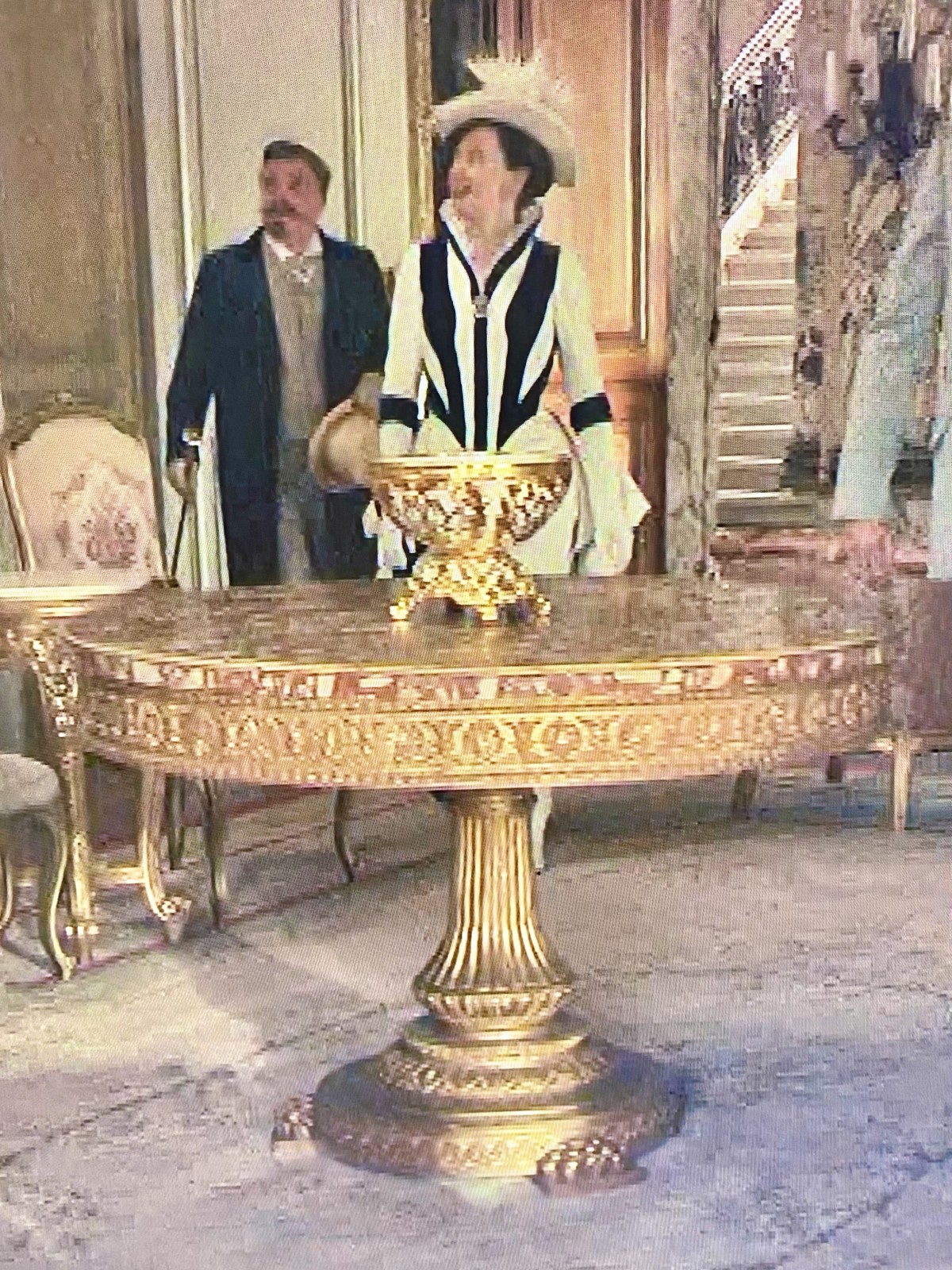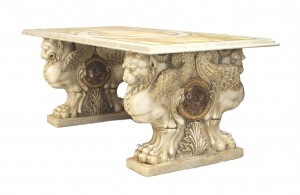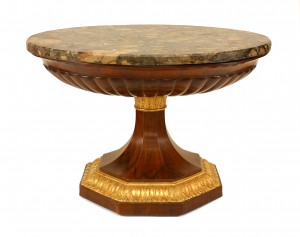X
{{ modalTitle }}
PLEASE FILL IN THE REQUIRED FIELDS.X
X
{{ modalTitle }}
Choose one of the options below.X
ITEM SUCCESSFULLY
ADDED TO PROJECT
Italian Neoclassic Giltwood and Breccia Rosso Marble Circular Center Table
 Italian
Italian Neo-classic
Neo-classic Tables
Tables Center Tables/Hall Tables
Center Tables/Hall Tables
Newel Warehouse
32-00 Skillman Ave
Long Island City NY - 11101
 (212) 758-1970
(212) 758-1970
Italian Neoclassic Giltwood and Breccia Rosso Marble Circular Center Table

Newel Gallery
306 East 61st Street, 3rd Floor
NY - 10065
 (212) 758-1970
(212) 758-1970
 Tables
Tables Center Tables/Hall Tables
Center Tables/Hall TablesNeo-classic
Neo-classic refers to the second revival of classic design for interior decoration in the 18th century. This style was inspired by excavations of Pompeii and Herculaneum that begun in 1738. Common motifs include dolphins, lyres, and urns.
Anthemion
A pattern or design characterized by spiral and petal work evoking the shape of a honeysuckle flower and palm leaf. It was developed in Ancient Greece and was influenced by Egyptian and Asiatic motifs. Anthemion patterns were initially used to decorate pottery, but over time, it became a common feature of architectural ornamentation. Its forms range from single palmettes on vases and columns to an alternating scroll design for larger architectural features such as cornices.
Apron
A structural support placed at right angles to the underside of a shelf, chair seat, or table top to provide additional weight bearing strength and often decorative flourishes.
Pedestal
A tall, narrow base which supports a statue, lamp, vase or any decorative object. Usually treated with moldings at the top and a base block on the bottom. Without moldings it is called a plinth.
Neo-classic
Neo-classic refers to the second revival of classic design for interior decoration in the 18th century. This style was inspired by excavations of Pompeii and Herculaneum that begun in 1738. Common motifs include dolphins, lyres, and urns.
Anthemion
A pattern or design characterized by spiral and petal work evoking the shape of a honeysuckle flower and palm leaf. It was developed in Ancient Greece and was influenced by Egyptian and Asiatic motifs. Anthemion patterns were initially used to decorate pottery, but over time, it became a common feature of architectural ornamentation. Its forms range from single palmettes on vases and columns to an alternating scroll design for larger architectural features such as cornices.
Apron
A structural support placed at right angles to the underside of a shelf, chair seat, or table top to provide additional weight bearing strength and often decorative flourishes.
Pedestal
A tall, narrow base which supports a statue, lamp, vase or any decorative object. Usually treated with moldings at the top and a base block on the bottom. Without moldings it is called a plinth.
Neo-classic
Neo-classic refers to the second revival of classic design for interior decoration in the 18th century. This style was inspired by excavations of Pompeii and Herculaneum that begun in 1738. Common motifs include dolphins, lyres, and urns.
Anthemion
A pattern or design characterized by spiral and petal work evoking the shape of a honeysuckle flower and palm leaf. It was developed in Ancient Greece and was influenced by Egyptian and Asiatic motifs. Anthemion patterns were initially used to decorate pottery, but over time, it became a common feature of architectural ornamentation. Its forms range from single palmettes on vases and columns to an alternating scroll design for larger architectural features such as cornices.
Apron
A structural support placed at right angles to the underside of a shelf, chair seat, or table top to provide additional weight bearing strength and often decorative flourishes.
Pedestal
A tall, narrow base which supports a statue, lamp, vase or any decorative object. Usually treated with moldings at the top and a base block on the bottom. Without moldings it is called a plinth.



